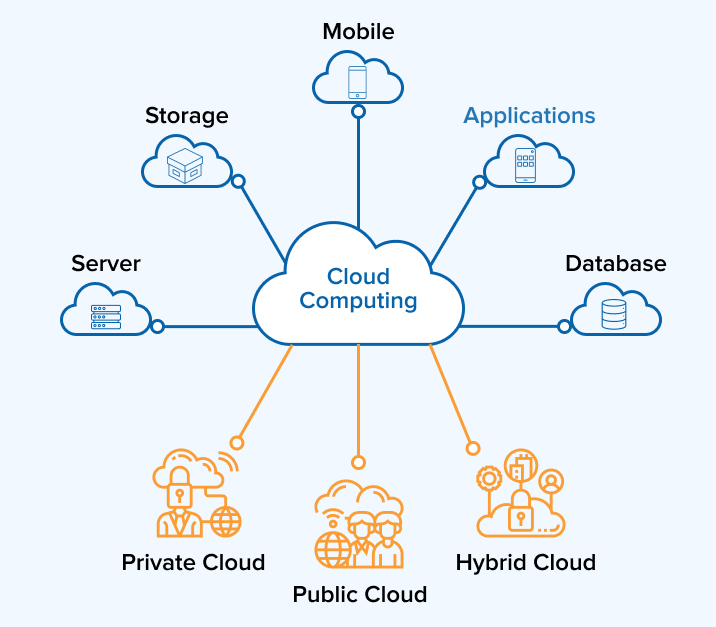Achieve Seamless Scalability With Cloud Solutions
In the ever-evolving landscape of cloud services, achieving seamless scalability stands as a cornerstone for modern companies looking for to remain competitive and adaptable. The pursuit for seamless scalability with cloud services unveils a world of possibilities for those eager to welcome the transformative power of vibrant source monitoring.
Advantages of Cloud Scalability
Cloud scalability uses companies the flexibility to dynamically adjust sources based upon need, making sure optimal efficiency and price effectiveness. One essential benefit is the ability to range sources up or down promptly in response to fluctuating workloads. This agility makes it possible for organizations to fulfill transforming customer demands without over-provisioning resources, ultimately leading to set you back financial savings. Scalability likewise improves efficiency by making sure that systems can take care of raised website traffic or workload without experiencing downtime or stagnations. By efficiently allocating resources, companies can preserve high degrees of performance during peak times without unneeded expenses during quieter durations. In addition, cloud scalability promotes development and trial and error by permitting businesses to conveniently check brand-new concepts and scale them as needed. This versatility encourages a culture of continuous enhancement and adjustment, allowing companies to remain affordable in a swiftly progressing market landscape. Eventually, the benefits of cloud scalability prolong past price savings to include better performance, dexterity, and development.
Trick Attributes for Scaling
Efficient scaling in cloud solutions relies upon essential features that enable companies to readjust sources dynamically based on need. One vital attribute for scaling is flexibility, allowing sources to scale up or down in action to fluctuating work. This ensures that organizations can satisfy efficiency requirements without over-provisioning resources. Another key attribute is scalability, allowing systems to deal with raised workload by including sources seamlessly. This function is crucial for accommodating growth without endangering performance. Additionally, automation plays an important duty in scaling by automating the provisioning and de-provisioning of resources based on predefined plans. Automation lowers human intervention, boosts efficiency, and guarantees fast reaction to altering needs. Monitoring and analytics tools are also crucial for scaling, offering understandings into source use, efficiency metrics, and potential bottlenecks. These devices allow companies to make enlightened choices and optimize resource allocation for efficient scaling. Generally, these crucial attributes collectively equip companies to accomplish smooth scalability in cloud solutions.
Carrying Out Auto-Scaling Techniques
To properly optimize source appropriation and adapt to differing workloads, organizations must tactically execute auto-scaling methods in their cloud services framework. Auto-scaling permits systems to automatically change the number of compute sources based upon real-time demand. There are different auto-scaling techniques that companies can use, such as predictive scaling, which makes use of historic information to forecast future source requirements, and responsive scaling, which reacts to current workload adjustments.

Ideal Practices for Scalability
For companies intending to improve their scalability in cloud services, executing best practices is crucial for optimal efficiency and resource monitoring. One trick ideal practice is making applications with a microservices style. This technique breaks down applications right into smaller, independent services that can be deployed, updated, and scaled individually, enabling better adaptability and scalability.
Another vital practice is making use of containerization innovation, such as Docker or Kubernetes. Containers make it possible for the product packaging of applications and their dependences into isolated systems, making it much easier to scale elements separately and release them constantly throughout various settings.
Furthermore, carrying out automated implementation and infrastructure as code (IaC) can simplify scalability initiatives (linkdaddy cloud services). Automation devices like Terraform or Ansible aid in provisioning and handling resources successfully, minimizing manual mistakes and allowing rapid scalability
Furthermore, monitoring performance metrics, establishing notifies, and performing routine capability preparation are necessary methods to guarantee positive scalability management. By adhering to these ideal techniques, organizations can attain smooth scalability in their cloud solutions while optimizing performance and resource usage.
Tracking Efficiency Metrics
When analyzing the effectiveness of cloud services scalability, very closely keeping track of efficiency metrics is important for making sure optimum performance and resource allotment. By constantly tracking key efficiency indications (KPIs) such as action times, resource, latency, and throughput use, companies can acquire important insights into the wellness and performance of their cloud infrastructure. Keeping an eye on efficiency metrics permits the very early detection of potential bottlenecks or problems that could impact scalability, making it possible for proactive steps to be taken to resolve them before they rise.

Conclusion
In conclusion, accomplishing smooth scalability with cloud solutions is vital for companies to optimize performance, enhance technology, and maintain high performance degrees during peak times. By leveraging the benefits of cloud scalability, carrying out auto-scaling techniques, using crucial functions such as elasticity and automation, and complying with finest practices like application layout and efficiency surveillance, organizations can efficiently scale their systems while making best use of source usage and efficiency.
The pursuit for smooth scalability with cloud solutions unveils a globe of possibilities for those eager to accept the transformative power of dynamic resource management.
Cloud scalability supplies companies linkdaddy cloud services the flexibility to dynamically adjust resources based on need, making sure optimum efficiency and price efficiency. Another essential function is scalability, allowing systems to take care of increased workload by adding resources perfectly.For companies aiming to enhance their scalability in cloud services, implementing best methods is essential for ideal efficiency and resource administration.When examining the performance of cloud services scalability, closely keeping track of efficiency metrics is necessary for guaranteeing optimum performance and source allocation.